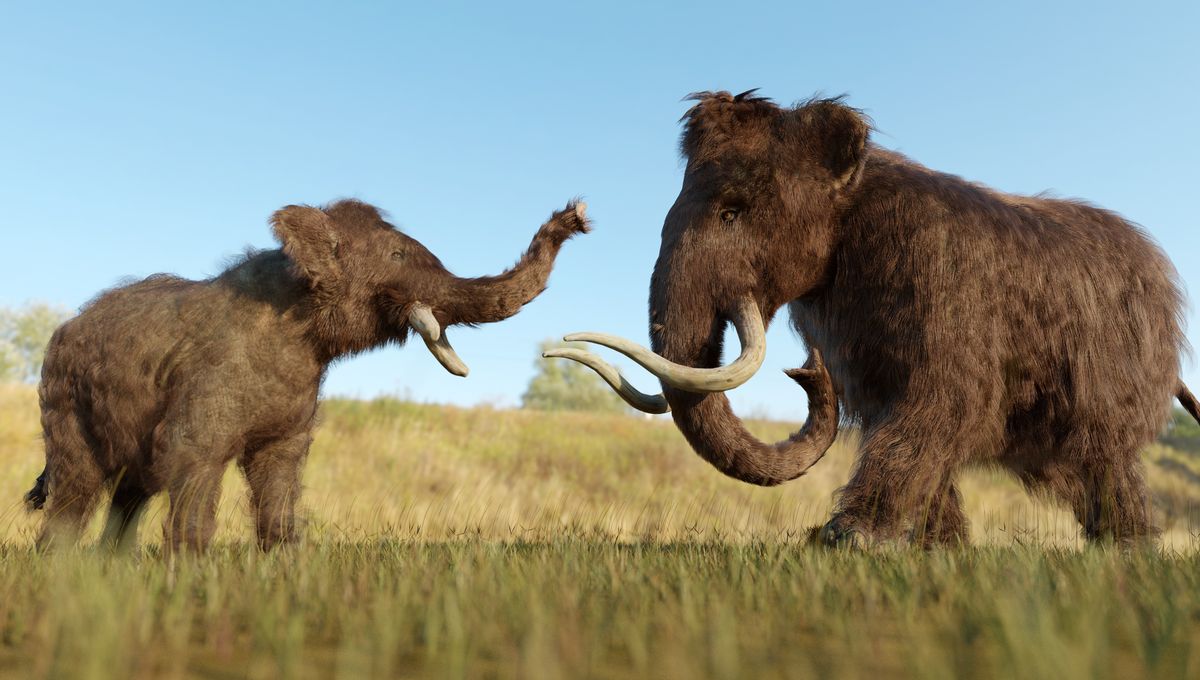
Next time you’re sniffing and itching from a bout of hay fever, spare a thought for the doomed mammoth whose infamous extinction may have been linked to the rise of pollen and bunged-up trunks.
New research has made the bold claim that hay fever may have been a factor in the untimely demise of mammoths and other beasts of the Ice Age.
Most of the planet’s mammoths fell into extinction more than 10,000 years ago just after the end of the last Ice Age (although a few isolated populations managed to hang on until nearly 4,000 years ago). As the world warmed, the global ecosystem underwent a radical shift and greenery bloomed across the mammoth’s habitat for the first time in millennia.
In the new study, scientists argue that the increase in pollen associated with the boom in plants could have led to a significant allergic effect on some animals, reducing their ability to smell odors.
With their noses clogged full of snot, the mammoth’s ability to sniff out mating partners could have been impacted and resulted in less successful breeding interactions. Ultimately, this may have put further strain on the population and led them into terminal decline.
“The reduction of the population of certain animal species could be related to mechanisms that violate the sensitivity of odours and, consequently, determine a decrease in the likelihood of finding a sexual partner during the mating period. These mechanisms could be due to pollen allergies, plant toxins, or plant metabolites,” the study authors write in the paper.
The researchers draw on a few strands of evidence to back up their argument. By studying the frozen tissues of prehistoric animals – including the woolly mammoth, cave lion, woolly rhinoceros, bison, and horse – they managed to obtain preserved proteins that are related to the immune system.
In particular, the team found fragments of immunoglobulin that may have been pumped out by the mammals due to an allergic reaction. This neatly lines up with their previous study that looked inside the guts of mammoths and found hints of plant life, like Oxytropis sordida and Huperzia, which cause an allergic reaction in many mammals.
The researchers highlight that a weakened sense of smell may have impacted the existence of Ice Age animals in many other ways, including their ability to forage food, navigate during migration, and evade the wrath of hungry predators.
Indeed, the theory doesn’t attempt to rule out the other common explanations for the mammoth’s extinction, such as habitat loss, overhunting by humans, disease, and inbreeding. It’s likely that there were many cruel twists of fate that led to their eventual extinction. However, the new study does put forward the fascinating idea that hay fever may have been an overlooked factor in their passing.
To support their theory, the researchers want to keep an eye out for mammoth samples with traces of immunoglobulin E, a biomarker closely associated with allergic reactions. While the key protein has never been discovered in palaeontological samples of mammals before, it would prove to be an invaluable part of the puzzle for their theory.
The new study is published in the journal Earth History and Biodiversity.
Source Link: Hay Fever Helped To Wipe Out Mammoths In Post Ice Age Ecosystem, Study Claims